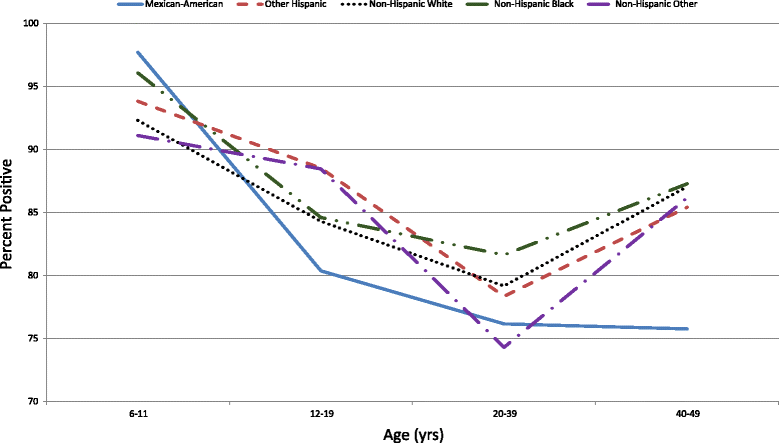Seroprevalence of Poliovirus Antibodies in the United States Population, 2009-2010
- PMID: 27492318
- PMCID: PMC4974751
- DOI: 10.1186/s12889-016-3386-1
Seroprevalence of Poliovirus Antibodies in the United States Population, 2009-2010
Abstract
Background: Polio is eliminated in the United States, with the last indigenous transmission occurring in 1979. However, global eradication of polio has not yet been completed, so importation of poliovirus into the U.S. is still possible. Specimens from the 2009-10 National Health and Nutrition Examination Survey (NHANES) were analyzed to evaluate population seroprevalence and assess overall risk from a poliovirus importation.
Methods: We evaluated prevalence of serum antibodies to all three poliovirus types using the National Health and Nutrition Examination Survey during 2009-2010.
Results: The overall seroprevalence to poliovirus was 93.9 % for type 1, 97.0 % for type 2, and 83.1 % for type 3. Seroprevalence was higher for type 2 compared to the other types (p < 0.001) and lower for type 3 compared to the other types (p < 0.001). There was a tendency for higher seroprevalence in the younger age groups, but this varied by serotype.
Conclusions: Seroprevalence was high (83.1 %-97.0 %) for all three types of poliovirus in the US population during 2009-2010. While there were observed differences by serotype with type 2 having the highest seroprevalence and type 3 having the lowest, consistent with previous observations, no large immunity gaps to poliovirus suggesting an imminent substantial population risk from a poliovirus importation were observed at a population level.
Keywords: Antibodies; NHANES; Polio; Poliovirus; Seroepidemiologic studies.
Figures




References
MeSH terms
Substances
LinkOut - more resources
Full Text Sources
Other Literature Sources
Medical

